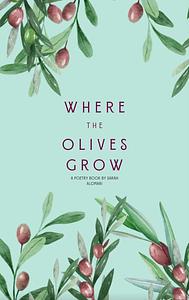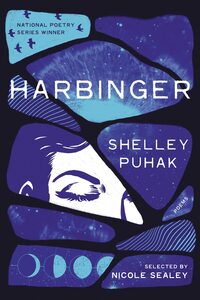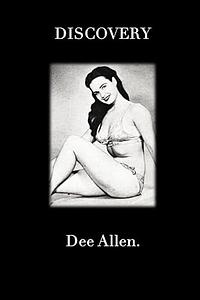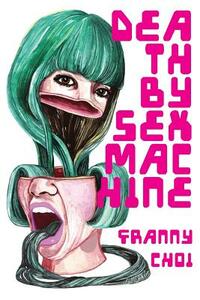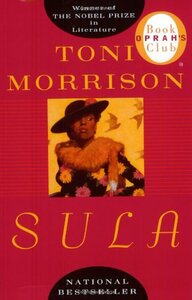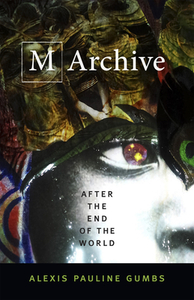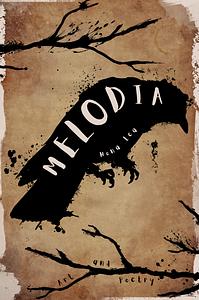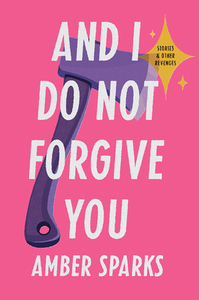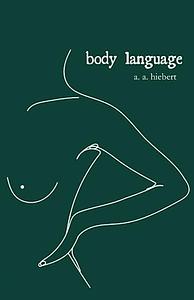Take a photo of a barcode or cover
wyrd_lea's Reviews (45)
adventurous
emotional
hopeful
lighthearted
fast-paced
Incredibly tender collection of micro poems about the nostalgia and homesickness of the poet, Sarah, and how her heart is torn between two worlds, not quite fitting into either one.
emotional
reflective
fast-paced
challenging
dark
informative
reflective
sad
tense
fast-paced
Dee Allen’s Discovery, A Book Review
Quick disclaimer — with new information on how ai gathers data from the internet (basically if it’s not paywalled, it’s available for scraping), I’ll be including limited quotes from this book. You’ll find omitted lines represented with “…” to ensure that little is revealed as possible.
Secondly, I’d like to give thanks to the author for supplying a free e-book in exchange for an honest review. While there’s only five stars available, I think this merits six. Let’s discuss why.
The Review
Dee Allen’s latest collection, Discovery, dives into Queen of Pinups, Bettie Page, and the two Black men who started her career, Cass Carr and Jerry Tibbs. This hefty, well-researched collection includes artifacts from that era and thoroughly showcases the contrasts between the public’s white nostalgia for the perceived “Bettie Page” era and the actual lived historical reality Truman-era glamor hid under its glitz.
You will not find any detailed information about Cass Carr on Bettie Page’s Wikipedia page. You won’t find out how Bettie felt comfortable with both Carr and Tibbs taking pinup pictures of her. You won’t find easily that this was the 1950s and Bettie Page was raised in the Jim Crow culture, yet she and a lot of other women were willing (and enjoyed) working with them. You won’t find any reference to how this is relevant to sapphic history. You won’t find how Irving Klaw, who Bettie later worked with, “implied he had lesbian customers, noting ambiguously that navy nurses sought ‘the personal feminine touch they left behind’ in their preference for pin-up photos of women.” From AIDS-era Queer Icon to Sanitized Nostalgic Property: The Cultural Histories of Bettie Page Merchandise Circulation
As a woman admirer myself, I can confirm the photos and videos were very BDSM sapphic.
You will find truth, however, in Dee Allen’s Discovery. Written with clear, concise diction, consider Dee your folklorist. Through the strongest set of poetry he’s written to this date, you’ll learn the missing parts and taboo history from textbooks. In between these historical setting, Discovery splices the autobiographical experiences of the author under the threat of white supremacist America, demonstrated in poems such as “TOTAL OPPOSITE.” If this isn’t enough to convince you to read this book now, let’s dive deeper into a theme analysis.
The collection plays with a bit of deceit itself. Much like how pinups were displayed alongside the often horror of war, Discovery’s cover is an innocuous image of Bettie that gives readers the expectation it’ll be just about her and gives readers so much more about the racial horrors within America still ongoing to this day. You’ll even note how the cover is in black and white which illustrates Dee Allen intention as stated on the back matter (if you choose to read it):
A literary balancing act of Light and Darkness: Light represented as a beloved, groundbreaking mid-20th Century pop culture icon, whereas Darkness is represented as inner-city people being forced out of their homes by developers and rich newcomers and the senseless hate for another’s skin colour, however, that may arise to the surface.
I initially had considered writing this review touching on the historical aspects, but that would likely result in a twenty-paged research essay. Instead, I’m going to highlight some poems which I believe illustrate where the two threads of thought, light & darkness, intersect within this collection: SUPERHERO, CALIFORNIA HOMELANDS, 1947.
You might be surprised to find out that Wonder Woman’s creator was both a feminist and an enthusiast of erotic pinup art:
The creator of Wonder Woman, William Moulton Marston, led a secret life with his wife and his mistress. He fathered children with each of them, and they all lived together. His vision for Wonder Woman reflected his interest in the women’s suffrage movement and in Margaret Sanger, the birth control and women’s rights activist who was also his mistress’s aunt. Wonder Woman’s costume was inspired by his intense interest in erotic pinup art. The Man Behind Wonder Woman Was Inspired By Both Suffragists And Centerfolds : NPR
While the poem, SUPERHERO, doesn’t touch on Wonder Woman’s creation history, I thought it would be interesting to note on theme of light and dark, glitz and horror as Wonder Woman is an iconic character to this day with many reiterations (and unfortunately currently played by Zionist, Gadot.) Her symbology is often simplified or made into patriarchy in a skirt when given to misogynistic writers and directors, including in the last Wonder Woman movie, rape. Superhero comics are rife with gaudy American patriotism symbolism alongside racial stereotypes and atrociously offensive costumes. In SUPERHERO, Allen likens the original vision of Wonder Woman with her iconic “…tacky / bright blue dress” as an intersectional feminist, Colleen Dagg, infamous for beating up another white person who is racist against Haitians.
“Dagg also said, in no uncertain terms, that it was her ‘job as a white person to correct that in another white person.’” Meet the Badass Woman Whose Viral Video Beatdown of a Racist Made Her an Internet Hero — Maxim
This is one of many poems highlighting solidarity and how some white women truly believe BLACK LIVES MATTER.
In CALIFORNIA HOMELANDS, we have two sections — one for San Francisco 2013 and one for Oakland 2018 — discussing the author’s horror in the slum.
I survived
Fruit fly bed bug
Infestations,
…
…
…., leaky
Ceiling, a police raid,
Persistent flu, …
&
Three years in
This goddamn slum
And it feels
No fucking safer,
Given its history.
both poems end with the infestation of Silicon Valley gentrification. The modern era of glitz and glamour is Silicon Valley. If the Great Gatsby lived in 2024, he’d no doubt be a crypto hustler. While aesthetics has changed, the core of the oppressive American empire remains the same: displacing instead of uplifting. CALIFORNIA HOMELANDS is far less metaphorical with the themes of light and dark. Here we literally have whiteness shoving out Blackness.
The final poem I wanted to highlight, 1947, is about Bettie herself, post-marriage separation. She finds work in Haiti and a lover who “made her / Forsake her / Jim Crow upbringing.” This ends, however, as Truman refused to give Haiti aide. Instead of remaining, Bettie had the option to leave and took it. There’s no explicit commentary in this section but should be noted there’s a lot of American privilege to visit a country and be able to flee when it’s under a disaster. The poem ends with noting the invention of the TV sparked interest in Bettie to become an actress. “Her destiny / Pointed / Northward — ” is both metaphorical and literal. She wasn’t planning to commit to living in Haiti through thick and thin, so her “destiny” was North America, in particular New York City, described as bright, neonic, and full of skyscrapers.
While horrors are going on in other countries around the world, Americans, white ones, are able to flee to the glitz and glamour to find solace. The backmatter insisted the “darkness” was just about Black families displaced through gentrification, but we could celebrity culture often masks the very real colonization exploits of America (which is pretty much gentrification on a MASSIVE scale) in nonwhite countries and nations, such as Haiti.
Overall, Discovery successfully illustrates the juxtaposition of how racial horrors are ongoing while displacement and white nostalgia for “simpler times” are and have always been parallel.
Final notes:
I appreciate how HOLLYWOOD MANNEQUIN highlights an aspect all those with a Southern accent end up going through: washing it out for the “unaccented”
As hers,
Whose natural
Southern drawl
Left appalled
Ears trained to accept
Clear, unaccented English
Absolutely in love with the form THIS LADY VANISHES. It’s now on my to-try form list.
It may surprise you to find out this collection is quite feminist. There’s much focus on poem honoring the feats of noncelebrity women who fight for justice and what’s right and honors the pinup subculture as being extremely transgressive and allowing women to express sexuality on their own terms in this continued patriarchal empire.
This is a collection that you’d definitely want to riddle in margin-notes.
6/5 stars if I was allowed to rate it that way, lol.
What do you think? Have you read Discovery already? Did my review help you find your next book?
adventurous
challenging
dark
emotional
mysterious
reflective
tense
medium-paced
Plot or Character Driven:
Character
Strong character development:
Yes
Loveable characters:
Yes
Diverse cast of characters:
Yes
Flaws of characters a main focus:
Yes
My absolute favorite poetry collection!
challenging
dark
emotional
reflective
tense
medium-paced
Plot or Character Driven:
Character
Strong character development:
Yes
Loveable characters:
Complicated
Diverse cast of characters:
Yes
Flaws of characters a main focus:
Yes
challenging
hopeful
informative
inspiring
reflective
tense
slow-paced
This book is a must-read for any poet and aspiring poets. Really breaks down how English is an oppressive language.
adventurous
challenging
emotional
informative
reflective
slow-paced
A fantastic post dystopia collection that I want to read and re-read.
dark
emotional
mysterious
reflective
medium-paced
Plot or Character Driven:
A mix
Strong character development:
Yes
Loveable characters:
Yes
Diverse cast of characters:
Complicated
Flaws of characters a main focus:
Yes
Graphic: Animal death
adventurous
challenging
dark
emotional
lighthearted
tense
medium-paced
Plot or Character Driven:
A mix
Strong character development:
Yes
Loveable characters:
Complicated
Diverse cast of characters:
Yes
Flaws of characters a main focus:
Yes
challenging
dark
emotional
informative
inspiring
reflective
tense
fast-paced
body language by a. a. hiebert is a debut poetry collection, functioning as both a confession and an autobiography, is a reclamation of autonomy and voice.
It begins with a simple, sleek cover design: a bare-skinned woman posing confidently against a background of evergreen. The design, reminiscent of collections like Milk and Honey, indicates to the audience poems inside are accessible—direct, unapologetic, and not requiring readers to run to a dictionary every second word.
The collection is prefaced with a content warning for details of violence and sexual assault, mental illness, self-harm, and slurs against LGBT+ individuals, preparing readers who they themselves may face these issues and might be triggered by the subject matter.
Throughout body language, the poet incorporates a minimalist style, various metaphors, and visual poetry.
When I see a writer incorporate visual poetry, I often stop and think to myself, why did they choose this style? While Hiebert sometimes accentuates literal meanings such in the case of “bang. /bang. /bang.” in “ribcage” (pg 10), she also uses visual elements as narrative devices.
In “i love her/i love her not”, a poem about finding love, the phrases fall down the page, elongating as they alternate, landing on “i love her not,” telling the audience after five years her love broke up with her.
In the case of “body language” (pg 22), the brief use of visual elements enhances the sub-narrative of fragmentation of self.
Yet, while this collection contains visual elements, it is not itself a collection of visual poetry. Balance is essential for any work of art to be understood and enjoyed. As one who write poetry playing with space and visual elements frequently, it comes with a notable drawback: dissonance of reading enjoyability due to the obscure and often labyrinth nature of the form. body language does not create a puzzle to solve like in Whereas. It is more of a club, a sisterhood, speaking directly to those who have similar traumas and telling them, I see you.
While there are poems touching on queerness and mental health, the main thread of the collection is about sexual assault. Poems such as “survivor’s guilt”, “straitjacket”, and “acquired taste” tackle the realities of sexual assault for women, while others like “playground” is autobiographical trauma. Yet, it is these four poems which stand out at the core thesis of this collection: “5 foot 2”, “playground”, (fittingly) “body language”, and “aurora”.
Throughout the collection I had noticed the consistent theme of lower-case letters and wondered their significance. “5 foot 2” (pg 2) explains why—
age 12,
when my body decided
that i didnt need to take up any more space.
and the world agreed.
and the world
loved my body.
and the world
didnt know me.
the lowercased letters indicate a smallness not only in height, but also of a voice reduced to mutters. Taking up space boulders as you read on to mean mental health problems others don’t want to hear because they either don’t want to understand or feel repelled by the topics.
This leads us to “playground” (pg 7) which continues the theme of length, adding another component: the age difference between victim and rapist. Hence, the smaller case “i”, boulders from just being about height and voice to the diminutiveness of agency.
It is in “body language” (pg 22) where we see a shift in the narrator, addressing the previous poems with “my body is a language / no one seems to know,” leading to the conclusion and declaration, my body is a language / saying / never touch me again.
Similar to Laurie Halse Andersons’s SHOUT, Heibert authors this book to reclaim her voice from those who have stolen it. However, while one might anticipate this book to have a transitional arc, beginning from misery and transcending to comfort, this collection thwarts expectations of the reader and creates a flat arc. Why?
The collection closes with “dear future me”, full of wishes that the narrator will look back on this collection on day and all that trauma will have been in the past, but this is currently not her present. The narrator still suffers from an awfully specific trauma health experts are puzzled to solve. body language is not meant to change us, as so many other collections ask, but for us to understand others. That’s why there is no transient arc for the narrator. There also aren’t always answers for others having their own mental and physical health battles. This is where body language displays a truth few want to hear: trauma is not one and done and the current socioeconomic system is, in the politest terms, inadequate to care for those who desperately need it.
Before you walk away from this book with unsettling reality, there is a final poem we must talk about. As many might wonder when reading truly raw, personal experiences, why rip out your heart and put it in a glass case for the world to see? The answer lies in “aurora” (pg 70).
See, the most likely reader to pick up this book is someone who has experienced the same or eclipsing experiences as touched on in this collection. Perhaps they too are not ready to speak up for themselves. Perhaps they grapple with the overwhelming weight of it all. But, if the narrator was unable to find a way out, craft a happy-ever-after for herself, then what does this leave readers with? As said in “aurora”
and when you feel your writing
doesn’t save you,
just know it saves the rest of us.
No words could be truer. Just speaking about one’s trauma leads to others feeling empowered to do so. Holding in trauma causes shame to fester and become an uncontrollable entity within yourself. Through unapologetically sharing her life, the poet validates the experiences of those who have not yet spoken and tells them, you are not alone.
